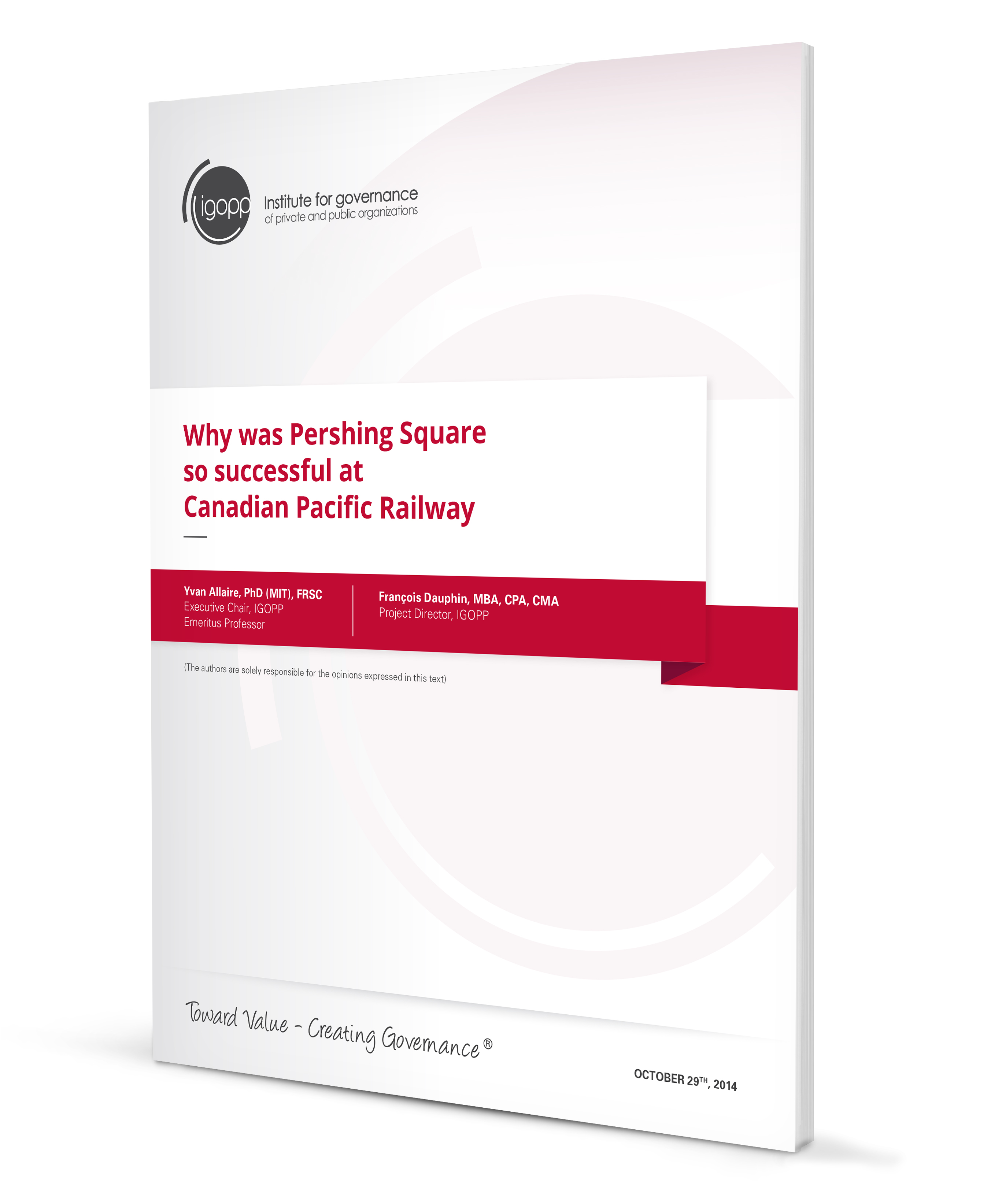
How Pershing Square found success at Canadian Pacific Railway
Yvan Allaire and François Dauphin | Financial PostIn 2011, Pershing Square Capital Management, an activist hedge fund founded by William (Bill) Ackman, acquired some 14.2% of Canadian Pacific Railway’s outstanding shares and proceeded to require several changes in the management and governance of the company. The CP board resisted fiercely his entreaties.
A memorable proxy fight ensued, which was won by Pershing and resulted in a new CEO, new board members and a new strategy for CP.
Results of this palace revolution were, in share price terms at least, remarkable — astounding, actually. From September 2011 to Dec. 31, 2014, CP’s stock jumped from less than $49 to north of $220, a compounded annual rate of return of 62% (including dividends).
Why was the CP intervention such an apparent success, when, in several other instances, Pershing’s brand of activism was far less successful? Mr. Ackman’s forays into J.C. Penney, Target, and Borders gave results ranging from mediocre to abysmal.
A close examination of the CP saga reveals a number of differentiating features absent from other less successful interventions:
First, this was a rare case of perfectly transferable managerial talent. The recently retired CEO of Canadian National Railways (CN), the best performing railroad company in North America, was soon to be freed from the legal (if not the ethical) constraints on his joining a direct competitor. This man, Hunter Harrison, is acknowledged as a highly skilled and innovative railroader and he was ready and willing to take over as CEO of CP.
In the Canadian context, such behaviour is not quite gentlemanly. Imagine the high performing CEO of Royal Bank Canada who, soon after retirement, would join the Bank of Montreal as CEO. But both Ackman and Harrison are Americans who could not care less about the mores and values of the Canadian business world.
In several other instances, Pershing’s brand of activism was far less successful
So, an “activist” hedge fund unhappy with the performance of the current CEO of a targeted company calls on the recently retired CEO of its best-performing, direct competitor who happens to be ready to jump ship and hit the ground running. How rare is that?
Second, the North American Railroad Industry is extremely well defined. The same companies have been serving this market for decades; their networks are well-established. Performance measures are standard across the industry, which makes for easy comparability across firms. Thus, it is a simple task for management, the board of directors and investors to benchmark any company against its peers.


